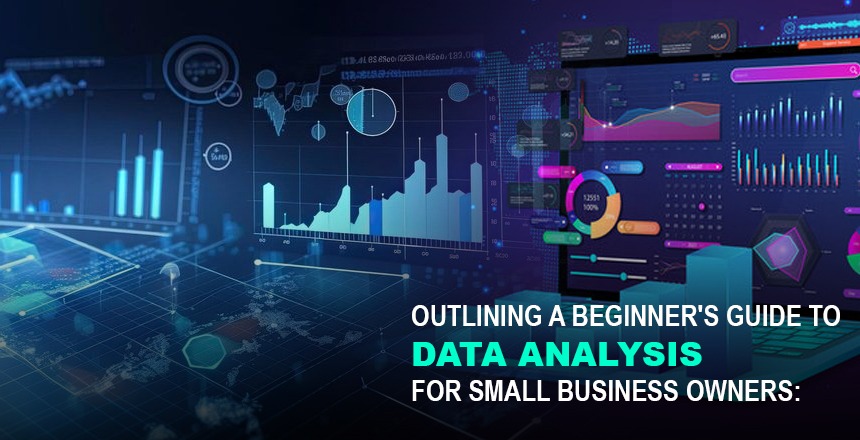Whenever you run a small business, you will probably have some amount of data at your
disposal—from the usage of your website to the facts about your daily trade and goods stock.
Using this data and analysis techniques over the data may offer a key success to help you make
better choices for your business. However, when it comes to data analysis, you might
experience some shivers down your spine if you have never taken stats. This tactical guide is
intended for the novice business user and seeks to outline these basic steps so that you can
begin to unlock the potential of your business data.
Be Comfortable with the Data
Let’s start with the basics: you must know what data you have and where it is housed. Common
data sources for small businesses include:
- Google Analytics: Helps you understand how many people visited your website and how your site is doing. It can help you identify visitor demographics, acquisition sources, behavior, conversion rates, and almost anything else.
- Sales records and invoices: Store data such as daily/monthly TOP line, product-wise sales, monthly trends, customer data, etc. Those include anything you’re recording in your accounting/POS systems.
- Inventory management systems: Monitor changes in product stock over time, cost of inventory, wastage, supplier statistics, as well as other parameters metric.
- Email marketing platforms: Provide mail open rates, click rates, subscribers’ activity levels, etc., which help improve your customer communication process.
- Social media analytics: Include details of follower growth as well as engagement statistics involving shares, click-throughs, and comments on your posts.
Check your goals and questions.
Instead of haphazardly running through all the available data, it is useful to have in mind the
particular business objectives that you would like the insight to be related to. Common examples
for small businesses may include:
MIS: determining the specific advertising media that produce the lowest-cost customers and
business.
Having good control over inventory management to avoid either cases of high stocks or low
stocks.
Deciding how you want to position high- or low-margin products
Significantly, as a result of this, the ability to comprehend how sales distribute over the year as
relative to the prior years. Identifying the area of your website that received the highest bounce rate
These include knowing your repeat customers.
Write down the questions you want to have answered by the data analysis you are going to
conduct. It guides your efforts and gives your heading and destination from the start.
You Clean and Prepare Your Data Sets.
In most cases, raw data in table or report form are likely to contain imprecision, inaccurate
entries, replicated records, or missing values. In order to enhance the reliability of the
conclusions, some preliminary data cleaning and transformation is applied. Typical tasks in this
step involve:
- Removing duplicates
- Functionality to cover data gaps originated from missing values.
- -Bisecting formats for value covenants such as dates and money.
- Erasing, replacing, and/or rectifying such blatant mistakes as typing mistakes or wrong entries.
A process of using filters or sort methods to narrow down rows according to some specified
relevance
It may require some learning about your data system as part of this grooming process. That is
why clean baseline data allows analysis tools and formulas to return accurate results.
Choose the Right Analysis Methods
Now that your business data is prepped, it’s time to pick analytics approaches that suit your
goals and data types at hand:
- Descriptive analysis: Specifically, it summarizes the overall trends, patterns, and relationships from existing datasets on the surface. Good starting method when one needs to know an introduction to anything at all. Among these are totals, averages, frequency distribution, cross-tabulation, and grouping of data into charts.
- Regression analysis: estimates and depicts the strength of an association between a measure-dependent variable and one or more measure-independent variables. Let’s test hypotheses on causal structure and forecasts.
- Segmentation analysis: It focuses on splitting data into categories to analyze the disparities in behavior and other factors across the market segments. Allows for targeting and personalizing per segment.
- Cohort analysis: categorizes a set of users according to their similarity and updates this category across time. We can determine customer retention or product adoption rates by the cohort.
Do Your Tests and Draw Your Conclusions
Then you are going to take your selected analytics techniques and input these in the
spreadsheet software or stand-alone business intelligence programs. Look out for:
- Overall trends and outliers
- Each of the above outcomes is accompanied by a percentage increase or decrease.
- Types of analysis: statistical associations
- Various deviations from average characteristics
- Changes over time periods
Don’t rely solely on the outputs of the software. Engagely interpret and question results to
transform the findings into recommendations and tangible data solutions for your business.
Track Performance and Iterate
Big data analysis does not stop as several new elements and strategies are introduced in the
process. As you implement business decisions that the latter triggers from data analysis, carry
on measuring associated performance. Record where outcomes vary in response and define
what new questions come up for the next analytics round.
The application of data insights for systematic enhancement cements business analytics in the
core activities of managing the small business. No knee-jerk reactions, but minimal reliance on
information to actually drive your position and business for growth in the long run.
Conclusion
People only need to follow and comprehend the instruction to perform data analysis, contrary to
the popular belief that data analysis is complex and involves a high level of mathematics. If
given some pointers on some of the steps, such as determination of objectives, data
preparation/arrangement, appropriate analytical tools and techniques, employment/analysis of
outputs, the small business owners can get valuable insights on their own. As the famous quote
goes: Regarding performance, our respondent said, ‘‘Data is a precious thing and will last longer
than the systems themselves.” So start using it for rational choices.








